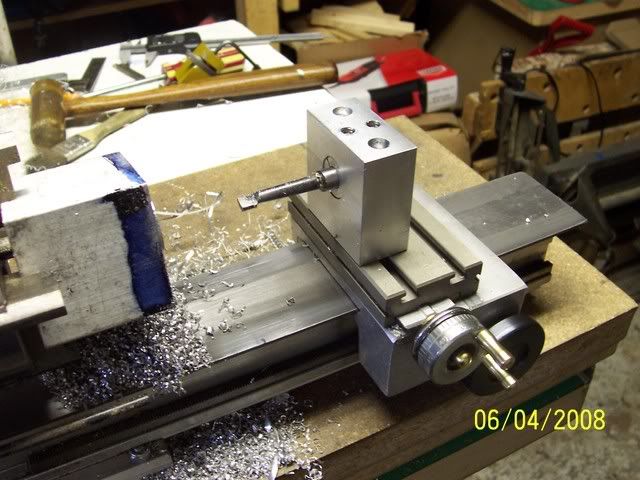Well I've managed to complete aluminum pistons for two Upshur engines on my Taig lathe using 1/8" and 1/4" HSS boring bits - the 1/8" work was fun, fortunately I only had to bore to a 1/2" depth. I'm limited by the Taig's 1/4" tailstock chuck capacity for the size of the starting hole.
Now comes the challenge - boring cylinder liners (steel) and barrels (0.75" bore and up to 2.25" deep. I've made the decision to avoid the mess of cast iron for now. The HSS bits obviously don't reach so I've been looking at buying brazed carbide tipped boring bars (perhaps the 9 pc set or just the longest one) and at boring bars using square or round tool bits.
Rather than rush off madly to buy tools I may or may not need I thought I'd check in with you guys - what's the best way to accomplish this task on light equipment? I do not have a mill or boring head.
I'm not clear on the practical merits of the carbide boring bars vs the boring bar with round/square bits. My gut reaction is to buy one long carbide tipped boring bar that will get into a 1/4" start hole to handle steel and forget the rest....
Any and all recommendations/comments welcome!
Thanks
Garry
Now comes the challenge - boring cylinder liners (steel) and barrels (0.75" bore and up to 2.25" deep. I've made the decision to avoid the mess of cast iron for now. The HSS bits obviously don't reach so I've been looking at buying brazed carbide tipped boring bars (perhaps the 9 pc set or just the longest one) and at boring bars using square or round tool bits.
Rather than rush off madly to buy tools I may or may not need I thought I'd check in with you guys - what's the best way to accomplish this task on light equipment? I do not have a mill or boring head.
I'm not clear on the practical merits of the carbide boring bars vs the boring bar with round/square bits. My gut reaction is to buy one long carbide tipped boring bar that will get into a 1/4" start hole to handle steel and forget the rest....
Any and all recommendations/comments welcome!
Thanks
Garry





